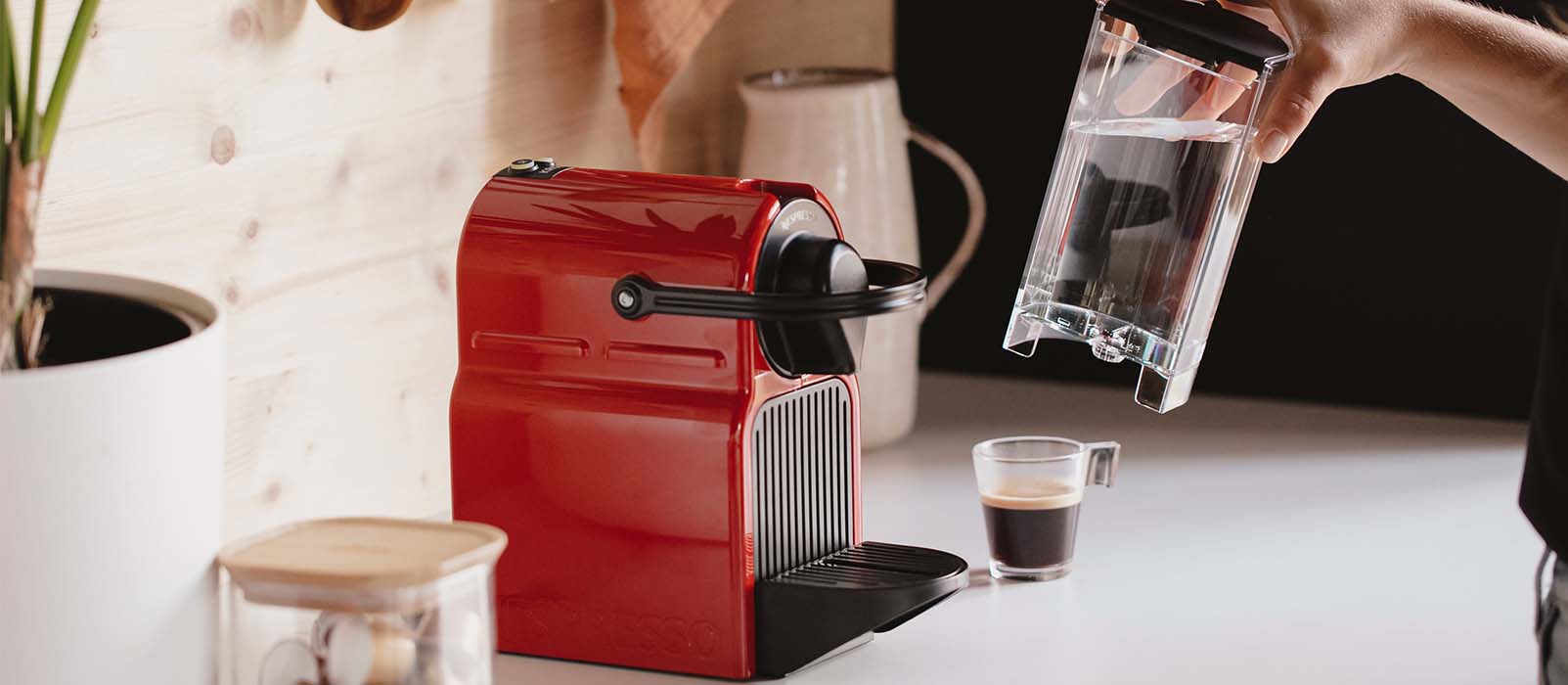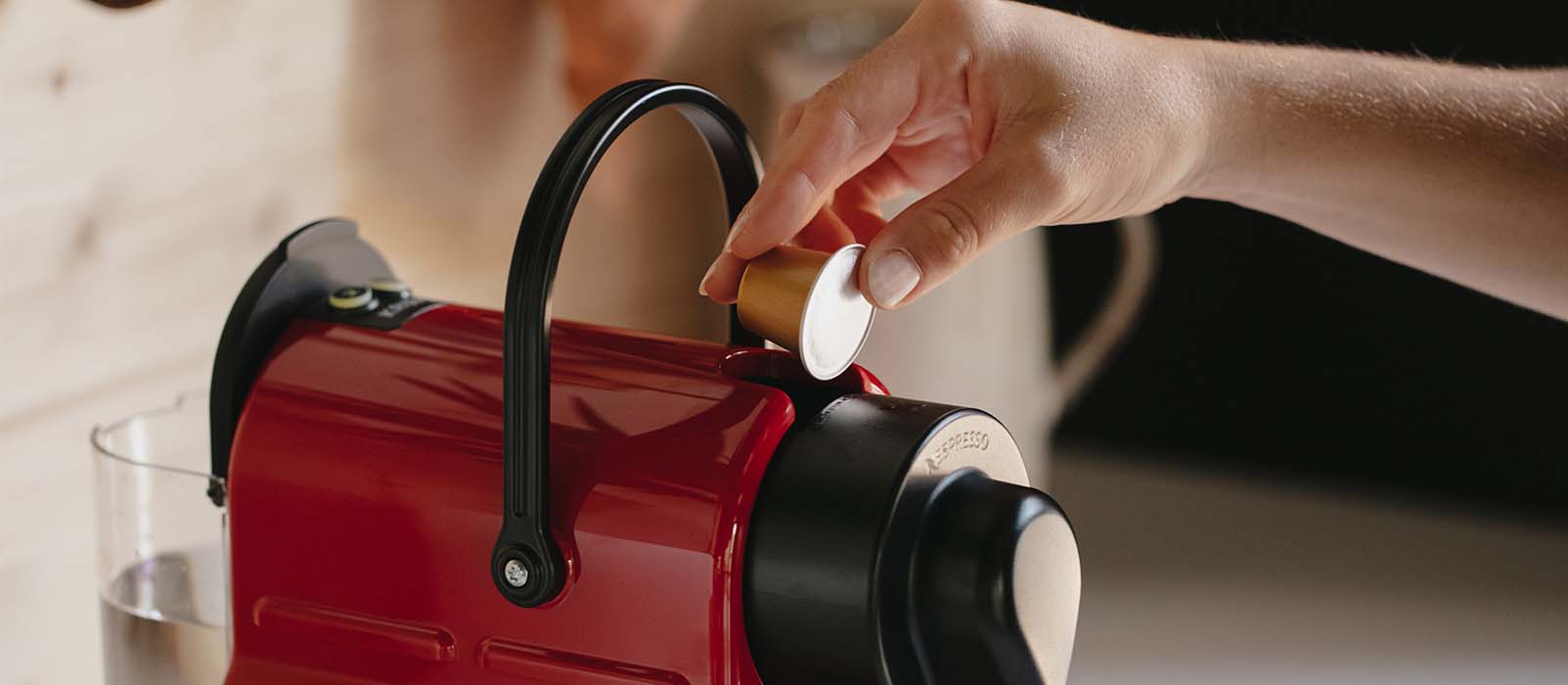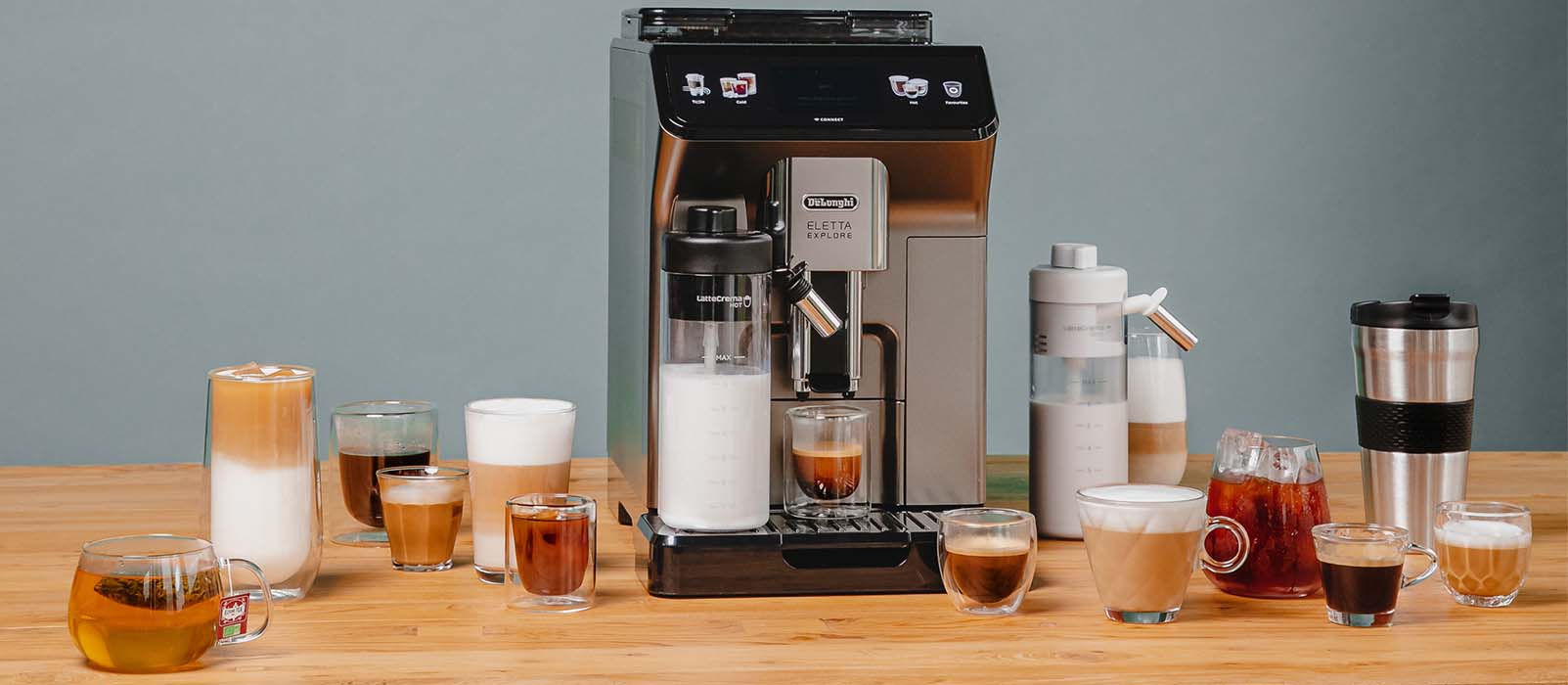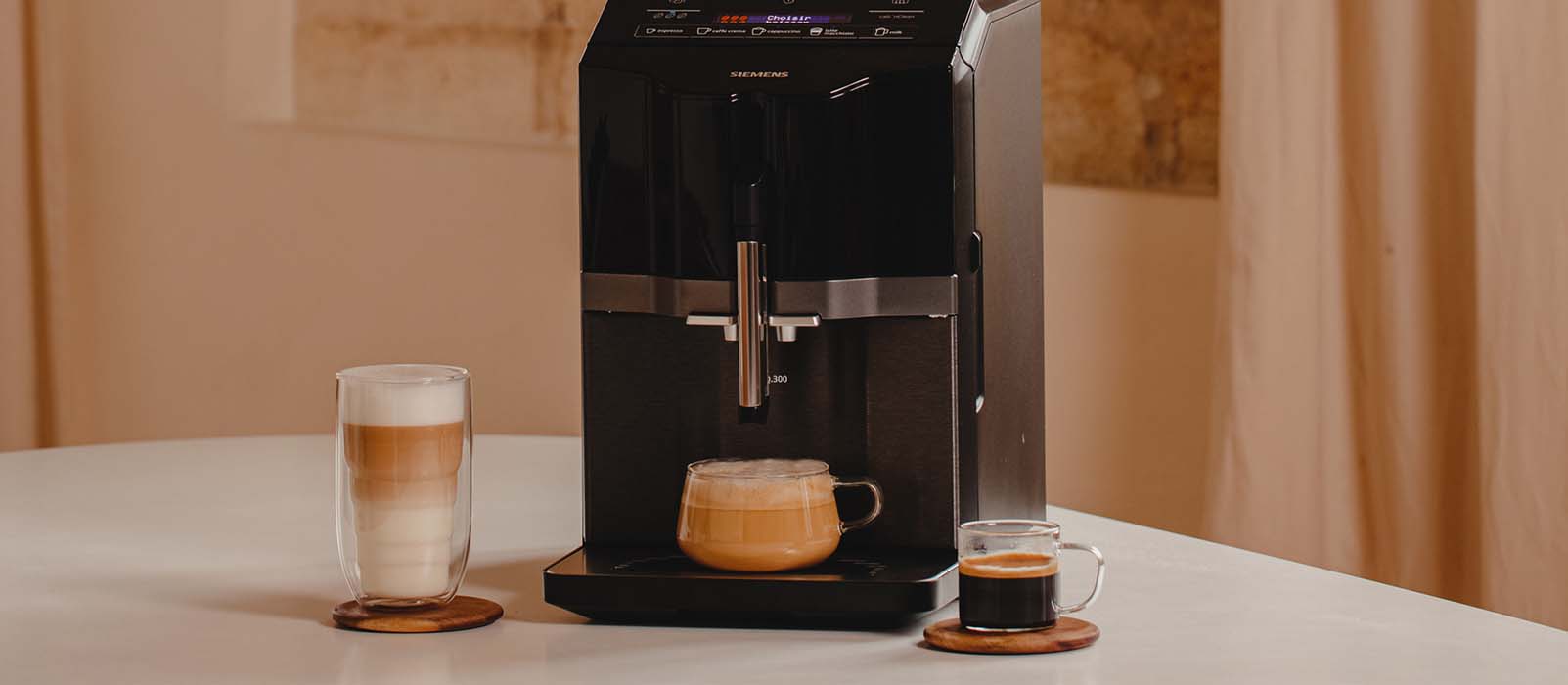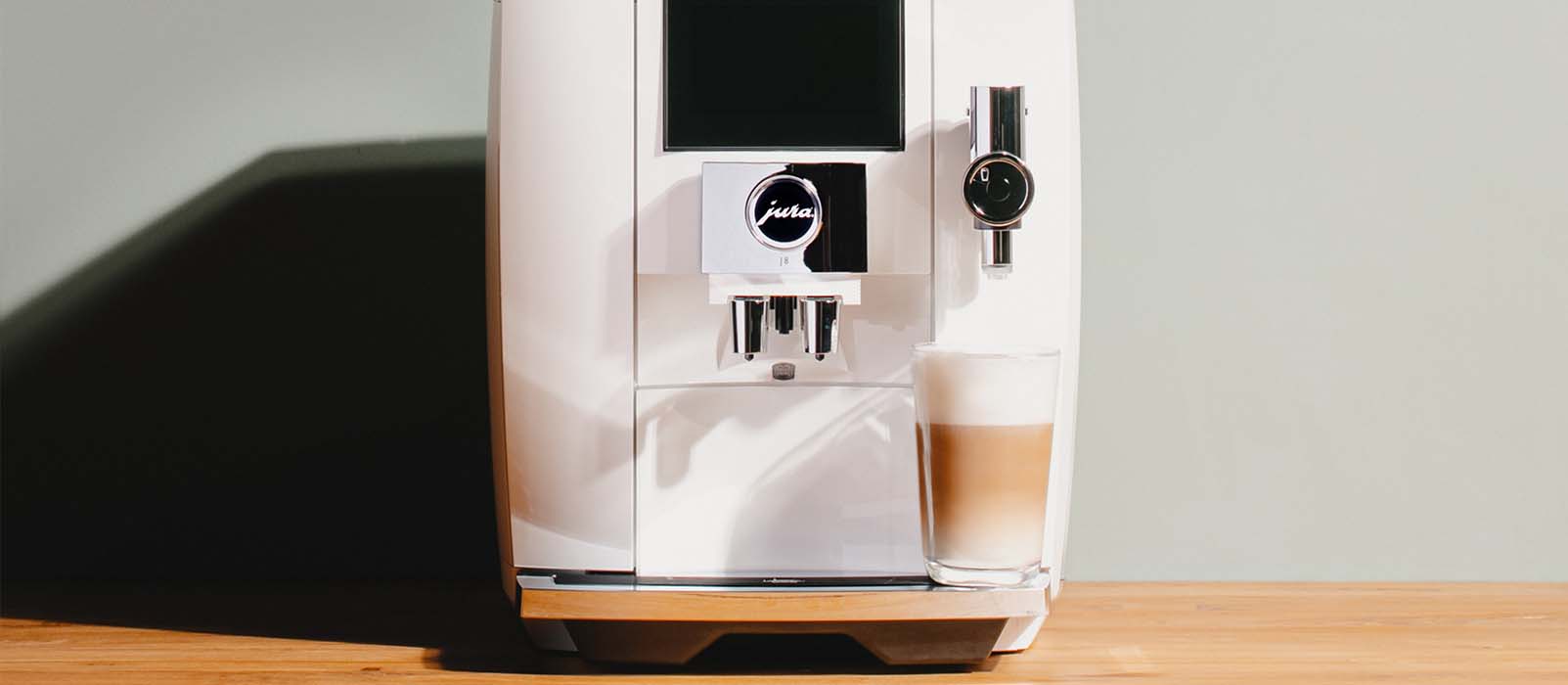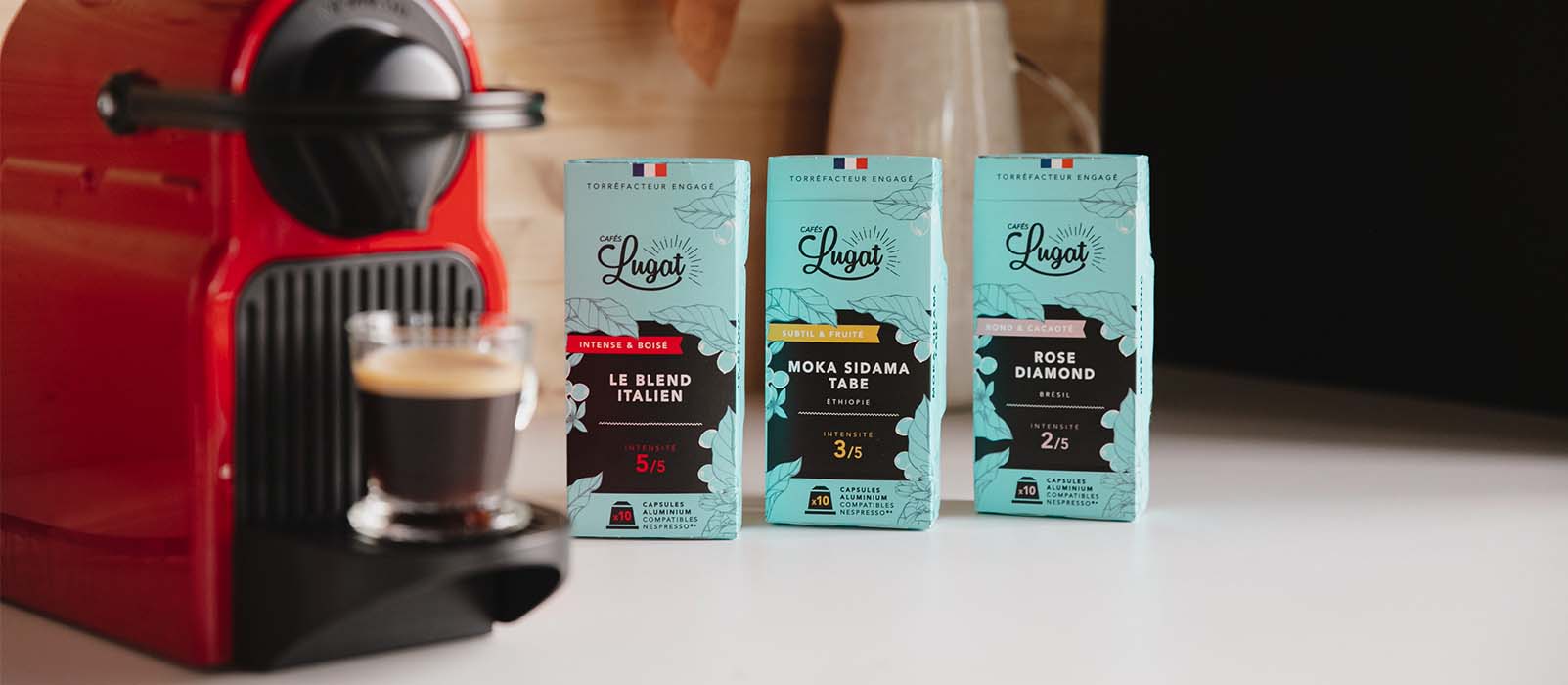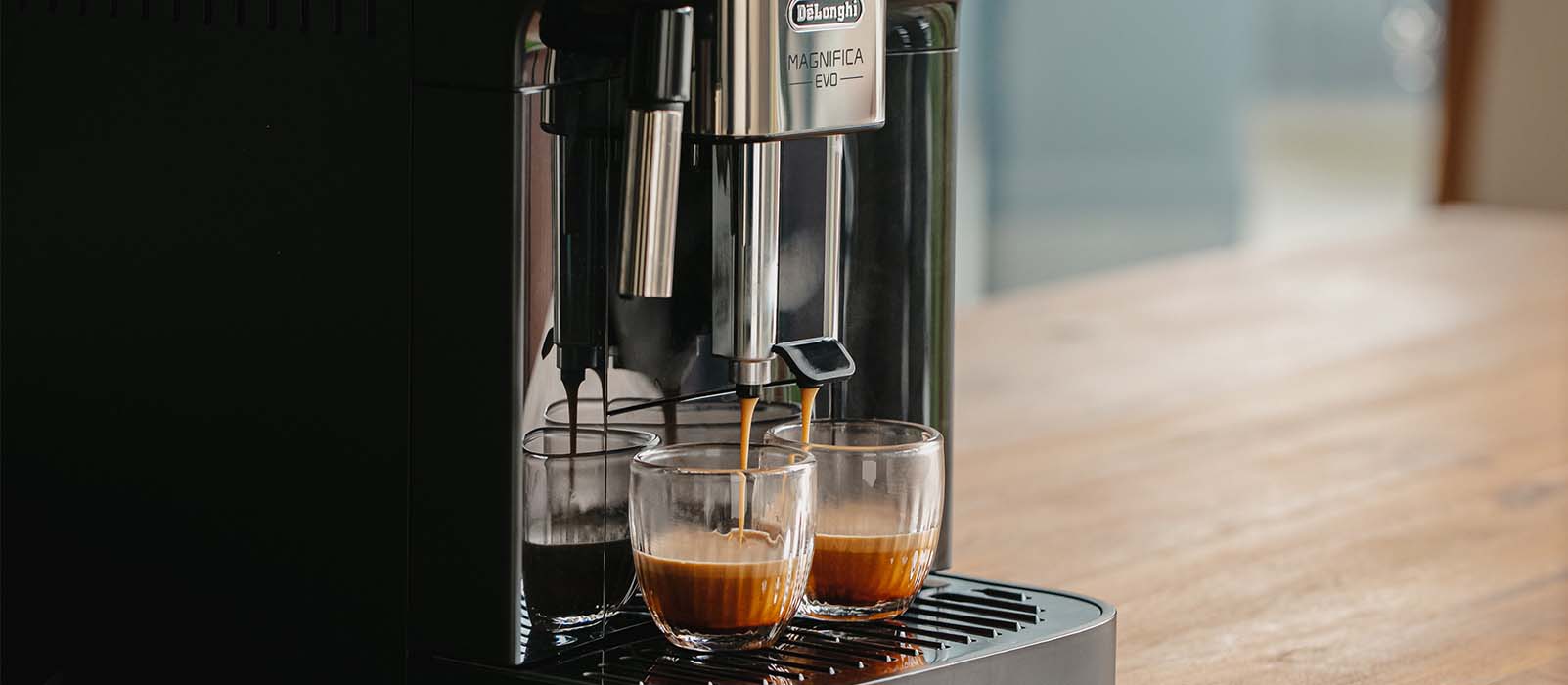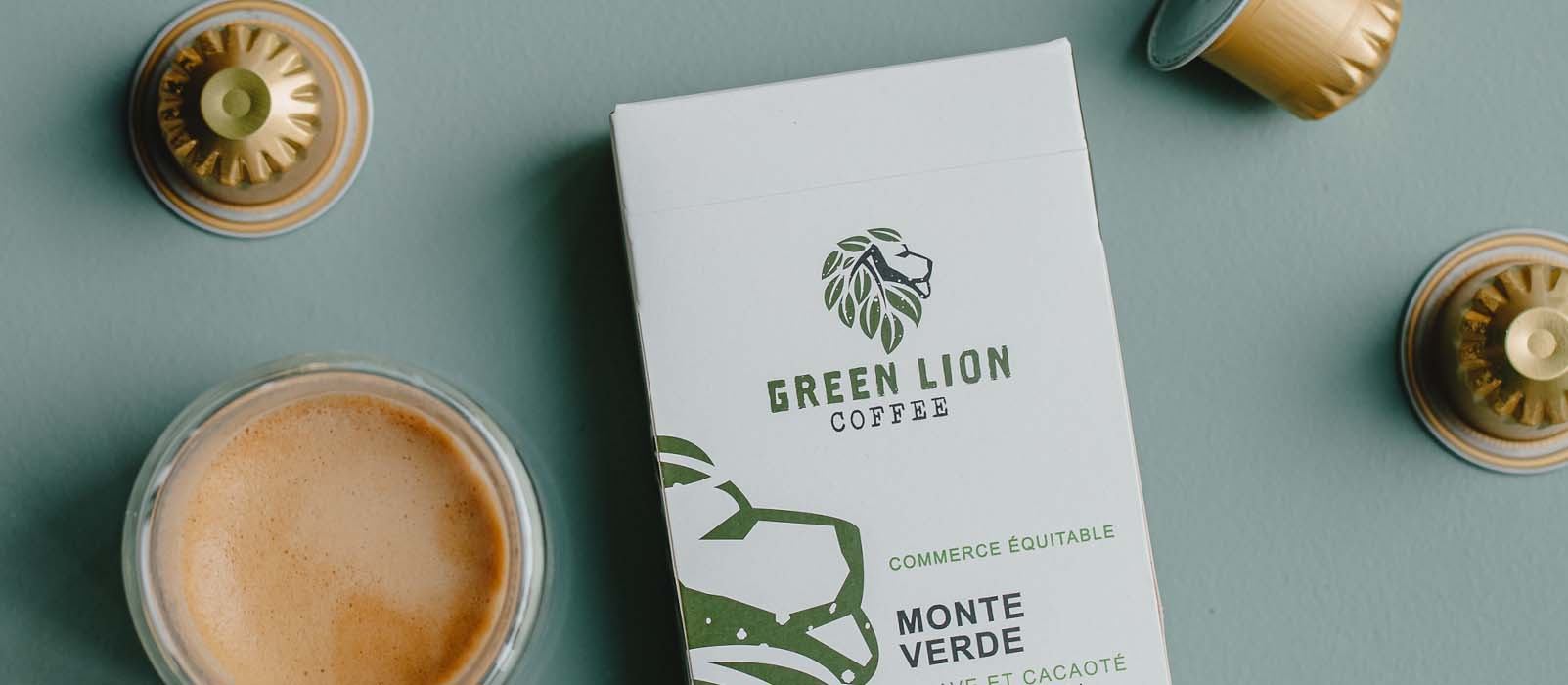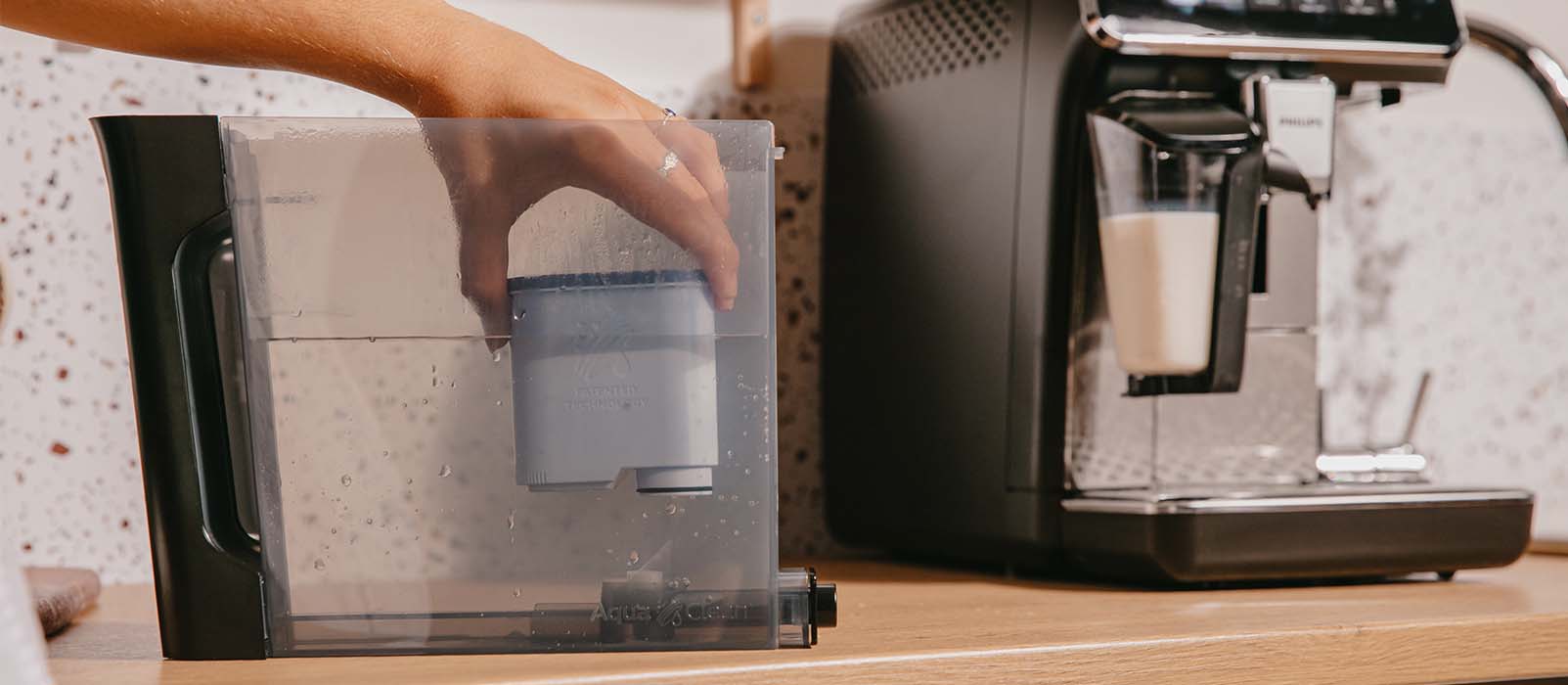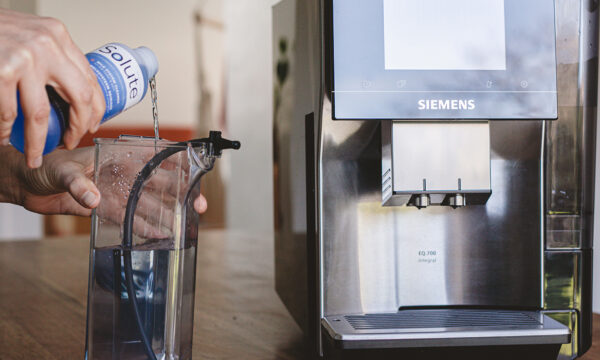
- Home
- Bean-To-Cup Vs Pod Coffee Machines: The Differences And Pros & Cons
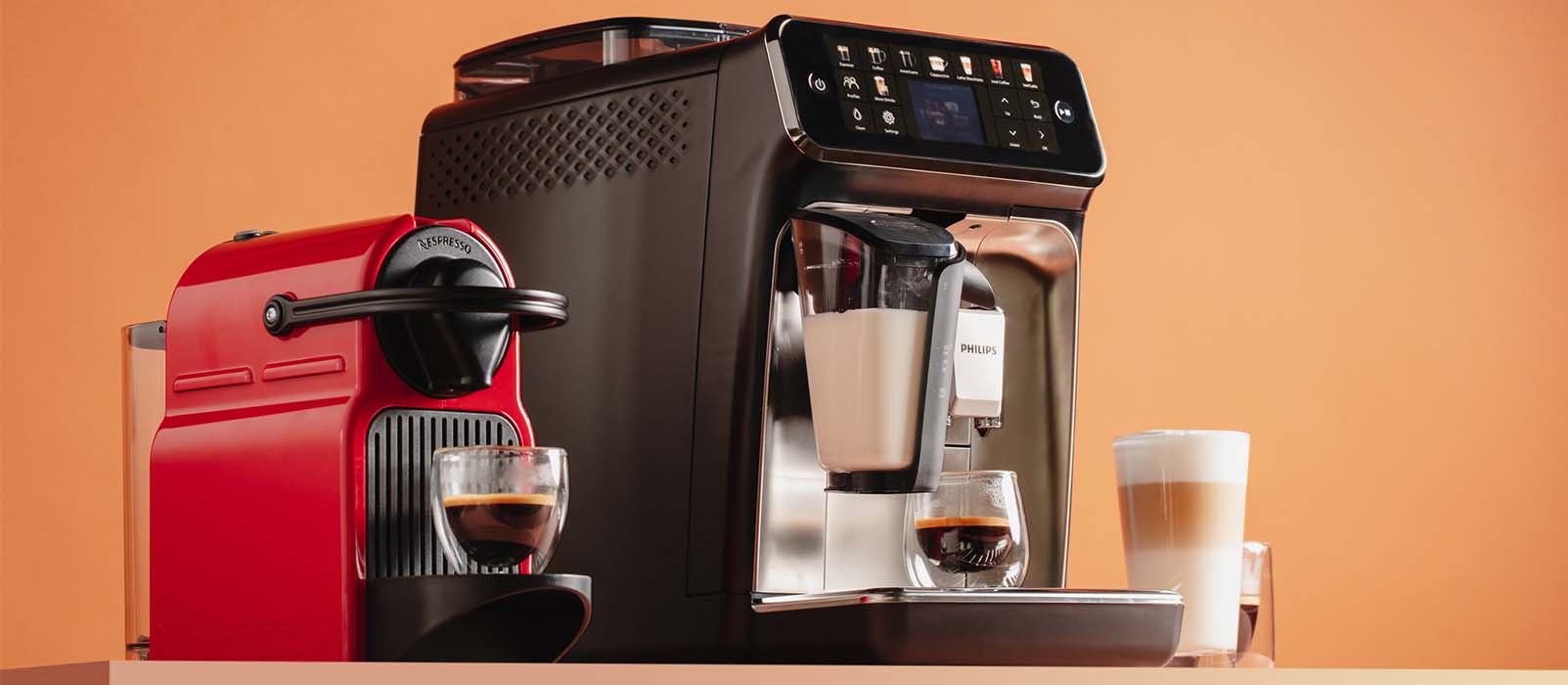
Bean-To-Cup Vs Pod Coffee Machines: The Differences And Pros & Cons
Written by Alice
Reading time 6 minFreshly ground or convenient pods? Bean-to-cup or capsule coffee machine? Making the right choice to match your needs and budget can be challenging. Each offers its own set of benefits and inconveniences, from the freshness of coffee beans to the convenience of capsules. Dive into the bean-to-cup vs pod machine debate as we offer our best advice to help you choose the best coffee machine.
Bean-To-Cup Vs Pod Coffee Machines: Coffee Pod Machines
What is a coffee pod machine?
A coffee pod machine is a type of coffee maker that uses pre-packaged pods or capsules containing ground coffee. These machines are designed for convenience and ease of use, allowing users to brew a single cup of coffee quickly. This ease of use eliminates the uncertainties often associated with coffee preparation, as there are few or no adjustments to be made.
To make coffee, you simply insert a pod into the machine, press a button, and the machine punctures the pod, forcing hot water through it to brew a fresh cup. Coffee pod machines are popular for their consistency, minimal cleanup, and variety of coffee options available in pod form.
What are the benefits of a coffee pod machine?
Compact Size
Many pod machines are quite compact and lightweight, making them ideal for small kitchens or office spaces where counter space is limited.
Convenience
This is perhaps the biggest selling point of pod machines. With pre-measured coffee pods and a simple brewing process (insert, press, brew), you can have a hot cup of coffee in a matter of minutes. No measuring, grinding, or cleaning up filters required.
Consistency
Delivers a consistent taste and quality with each cup, as the pods contain pre-measured amounts of coffee.
Variety
Offers a wide range of coffee flavours and types, including espresso, latte, and flavoured coffees, all available in pod form.
Minimal Cleanup
Produces minimal mess, as the coffee grounds are contained within the pods, making cleanup simple and fast.
Portion Control
Allows for precise portion control, reducing waste and ensuring you brew just the amount you need.
Design
The capsule machines available on the market are often sleek. Why? The limited number of settings needed means that these small electrical appliances have few controls or buttons. When it comes to colours, you’ll find a whole range of colours to choose from, to liven up your coffee corner!
Who are pod coffee machines designed for?
Pod coffee machines are ideal for busy individuals who drink about 3 coffees a day and are looking for an easy and fast way to prepare their coffee. They can also be a good solution for the elderly or mobility-impaired, offering an easy and fuss-free brewing method.
These machines are therefore suitable for both occasional coffee lovers and those who prefer a simple method of consuming their daily coffee.
Bean-To-Cup Vs Pod Coffee Machines: Bean-To-Cup Machines
What is a bean-to-cup machine?
A bean-to-cup machine is a coffee maker that grinds fresh coffee beans and brews them into a cup of coffee with minimal user intervention. These machines typically feature built-in grinders, allowing for the entire coffee-making process, from grinding the beans to brewing the coffee, to be automated. Bean-to-cup machines are known for delivering high-quality, flavourful coffee by using freshly ground beans for each cup, and they often include customisable settings for grind size, coffee strength, and milk frothing for beverages like lattes and cappuccinos.
What are the benefits of a bean-to-cup coffee machine?
Customisation
Many bean-to-cup machines allow you to adjust various brewing parameters like coffee strength, grind size, and brewing temperature. This level of control lets you personalise your coffee experience to your exact taste preferences.
The Variety Of Beverage Options
From entry-level machines to high-end coffee machines, all bean-to-cup coffee machines allow you to prepare several caffeinated beverages, from the most basic to the most complex, the higher up the range you go. If you opt for a bean-to-cup machine with a milk system, you’ll also be able to make delicious cappuccinos or great latte macchiatos. Some will prepare double espressos, others allow you to make two drinks at the same time, or even other drinks, such as tea or hot chocolate.
Price
At first glance, buying a bean-to-cup coffee machine may seem rather expensive. However, as with pod machines, it’s the price of the coffee that makes the difference. If you make an average of 5 coffees a day, you will consume 14.6 kilos of coffee in a year. On average, a conventional coffee costs around £18 per kilo. So you’ll spend around £260 a year on coffee beans.
Sustainability
As well as being cheaper, coffee beans are also more environmentally friendly, as they produce less waste than coffee capsules, and the coffee grounds are compostable and recyclable.
The resulting cup of coffee
With bean-to-cup coffee machines, you can make your espresso or ristretto from freshly ground coffee beans. If you also choose freshly roasted coffee, you’re guaranteed to enjoy quality coffee.
MaxiCoffee tips
To sum up, while a pod machine is more affordable than a bean-to-cup machine, bean-to-cup coffee will cost you less for more cups of coffee a year!
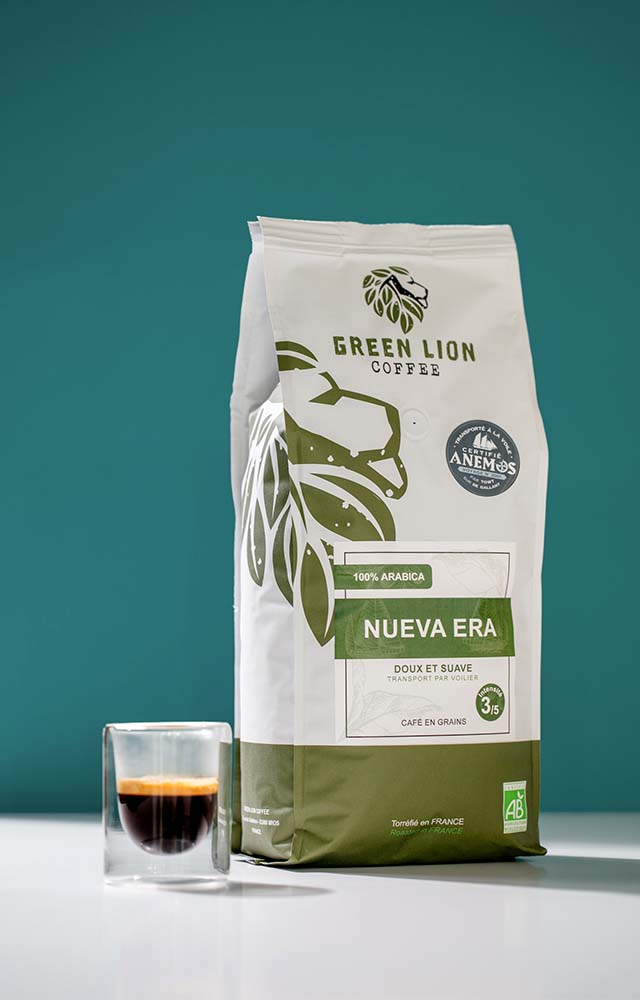
Who are bean-to-cup coffee machines designed for?
Bean-to-cup coffee machines are ideal for heavy coffee drinkers (around five coffees a day) or those who prefer intense flavours.
They are also ideal for those who want to adapt their coffee to their own tastes and therefore set the parameters of their coffee machine. They also work well for households where different family members drink different types of coffee (espresso, cappuccino…)
Bean-To-Cup Vs Pod Coffee Machines: Which to Choose?
When choosing between a bean-to-cup coffee machine and a pod machine, consider factors like your drinking habits, budget, and personal taste. Both types have their advantages and disadvantages.
Cost-Effectiveness
Initially, a bean-to-cup machine might seem more expensive, with entry-level models around £340 compared to pod machines at about £100. However, if you consume five cups of coffee a day, you’ll spend around £260 annually on coffee beans, compared to £550 on pods. For heavy coffee drinkers, a bean-to-cup machine is more cost-effective.
Flavour and Variety
Bean-to-cup machines generally produce superior espresso with richer flavour, while pods can be less precise and sometimes overly bitter. However, pod machines offer great flexibility, allowing you to change coffee types with each cup and enjoy a wide range of flavours.
Environmental Impact
Bean-to-cup machines, often made in Europe, have a smaller carbon footprint related to transportation compared to many pod machines made in Asia. While pod recycling has improved, bean-to-cup machines produce compostable coffee grounds, which are more environmentally friendly.
Beverage Options
Pod machines typically offer limited beverage options, while even basic bean-to-cup machines can make various coffee drinks. Higher-end models can create multiple coffee and milk recipes, turning your kitchen into a coffee shop.
Maintenance and Space
Bean-to-cup machines require more maintenance and are generally larger and noisier than pod machines. Pod machines are easier to clean, quieter, and more compact, making them ideal for small spaces.
Both bean-to-cup and pod coffee machines have their pros and cons. For freshness and long-term cost savings, bean-to-cup machines are ideal for heavy coffee drinkers. For convenience, variety, and ease of maintenance, pod machines are a great choice. Whichever option you choose, for the best quality coffee beans or a wide selection of coffee pods, Maxicoffee has you covered.
Discover our other articles
